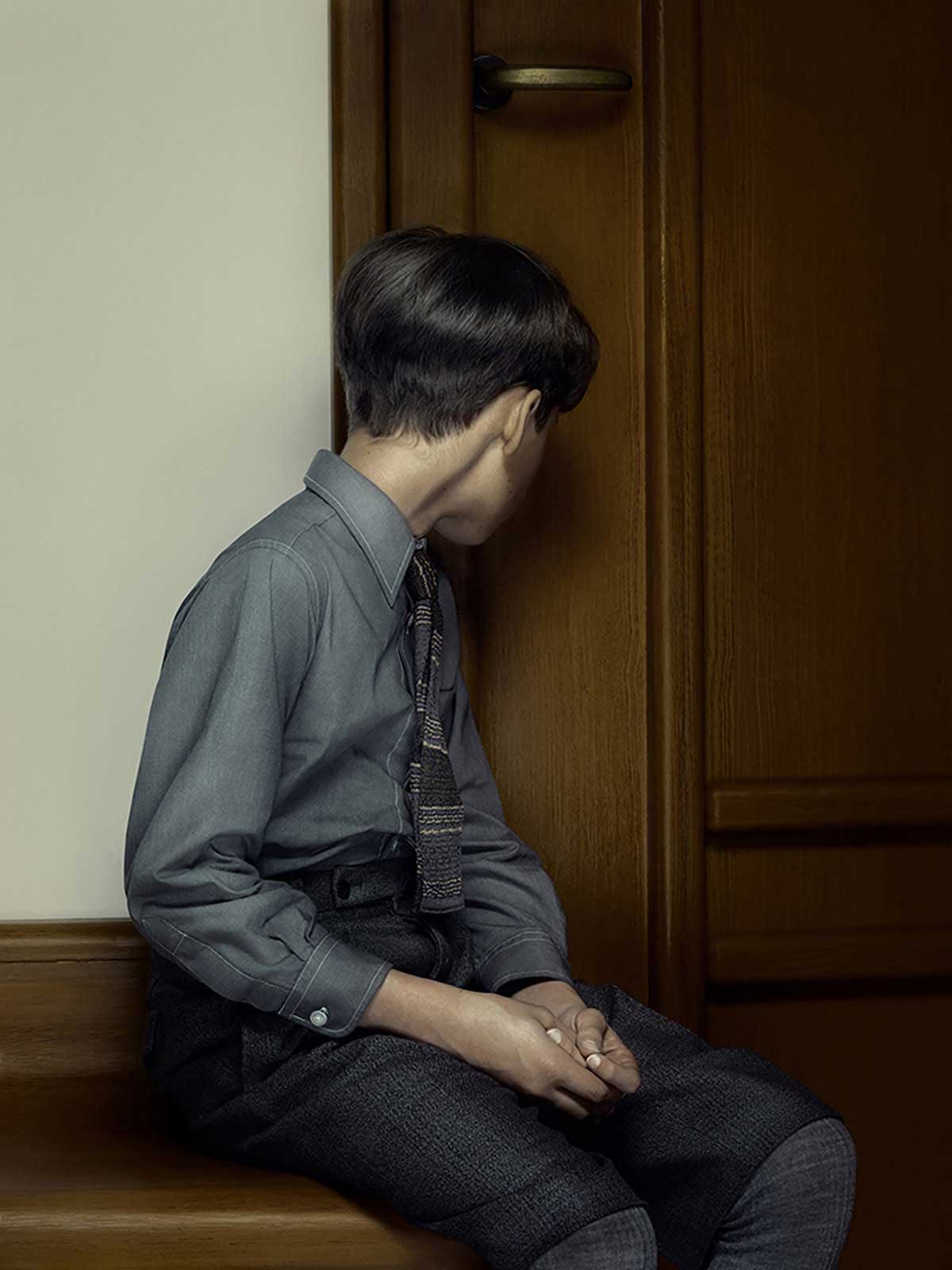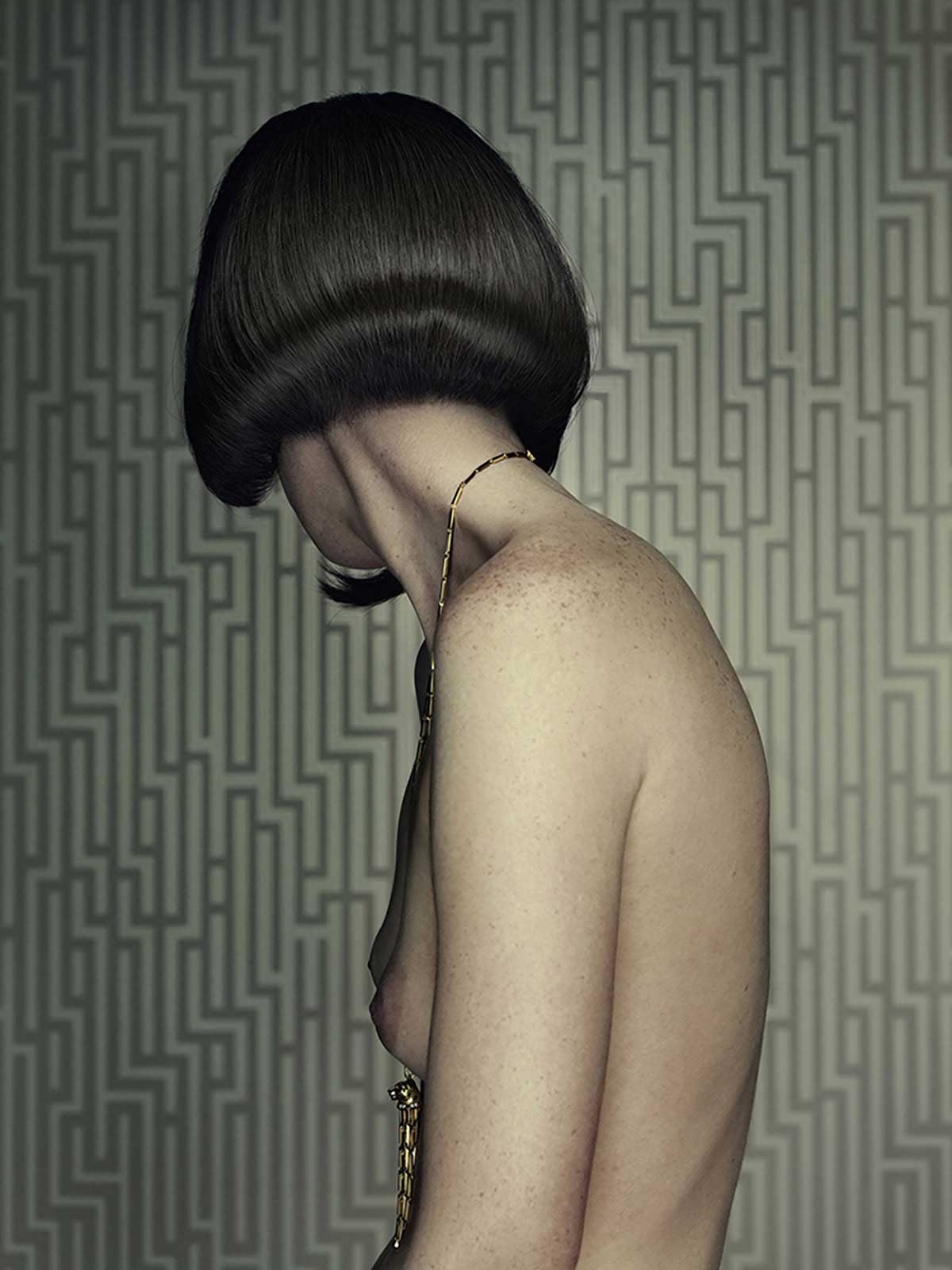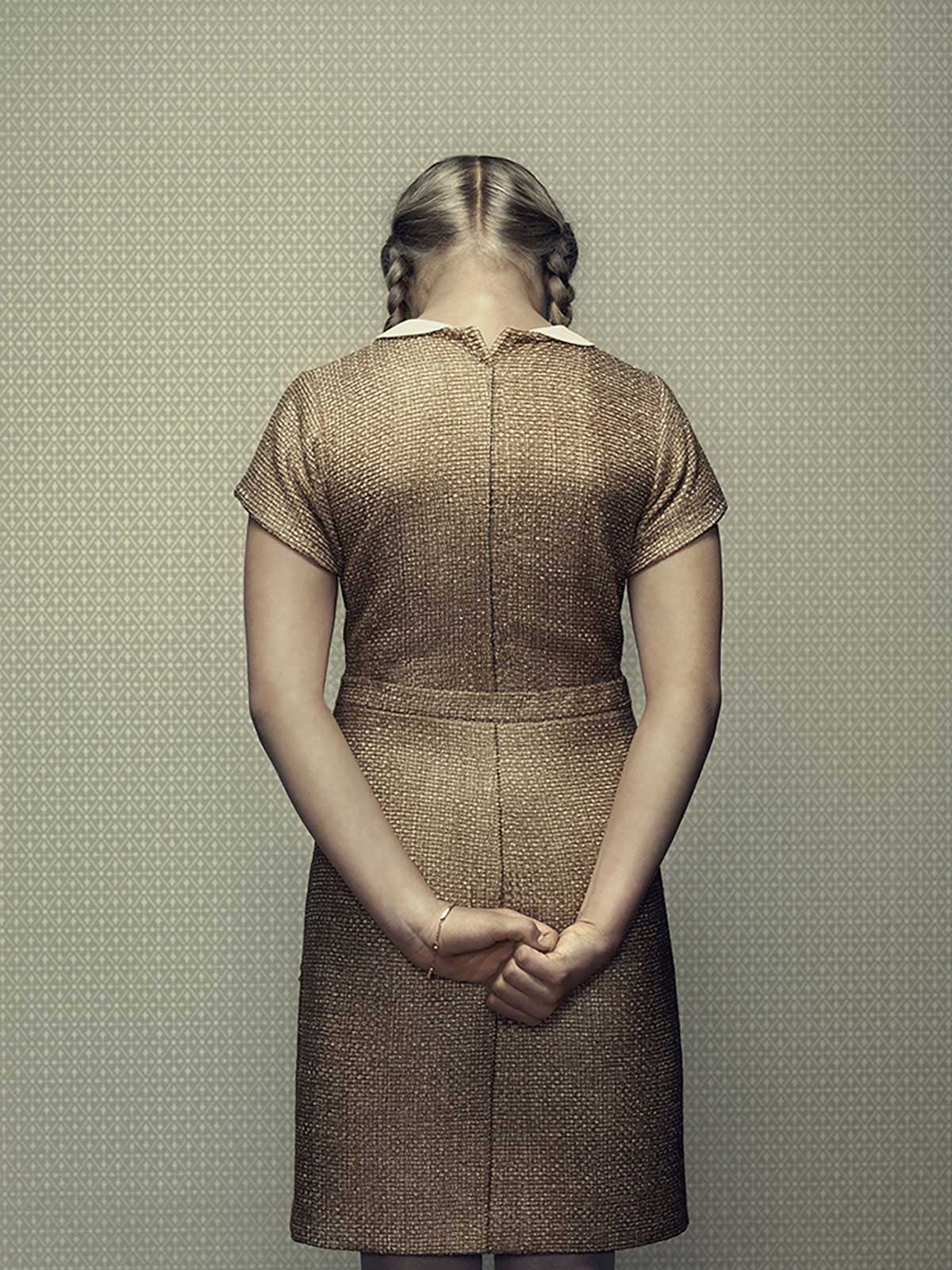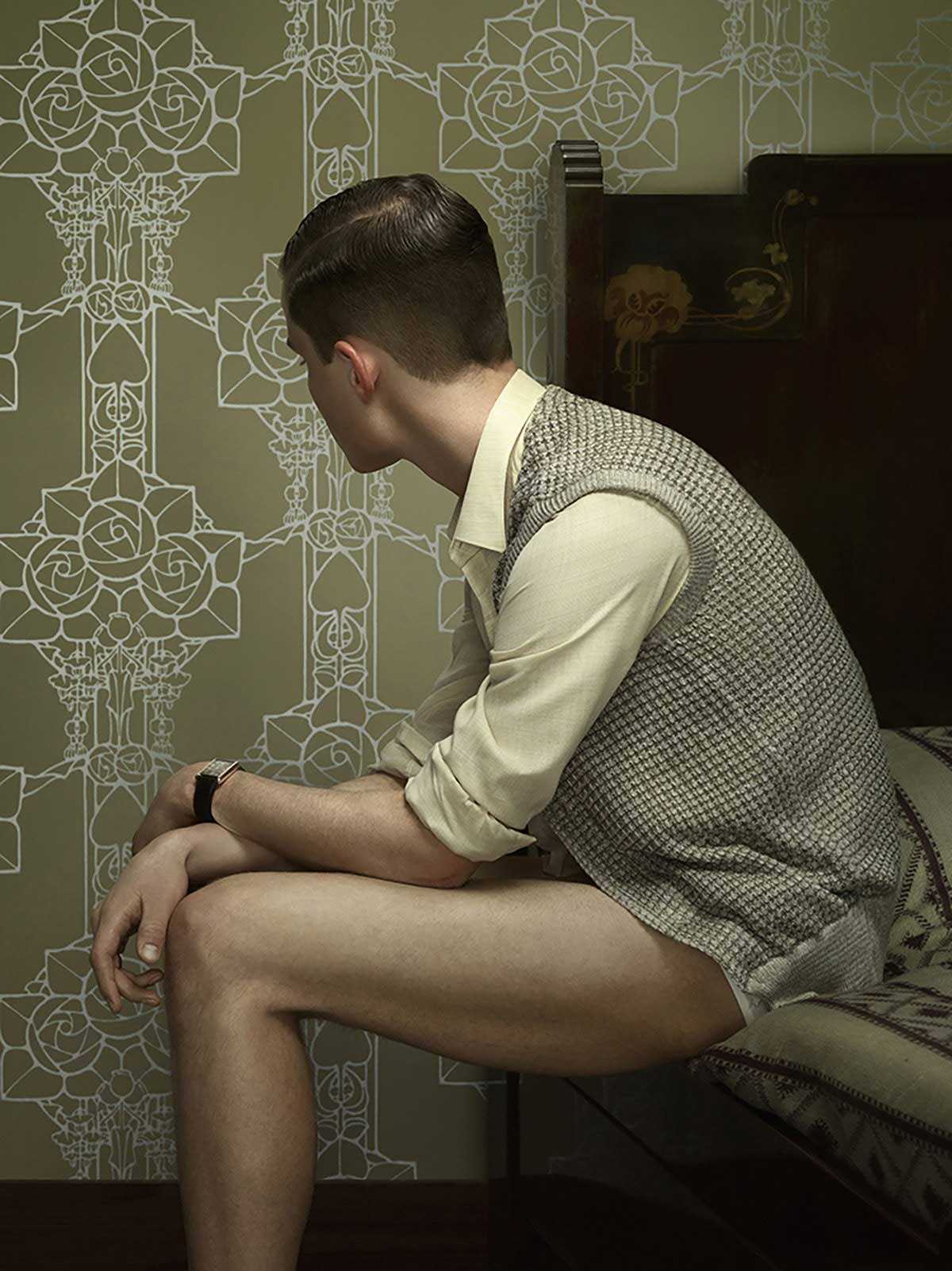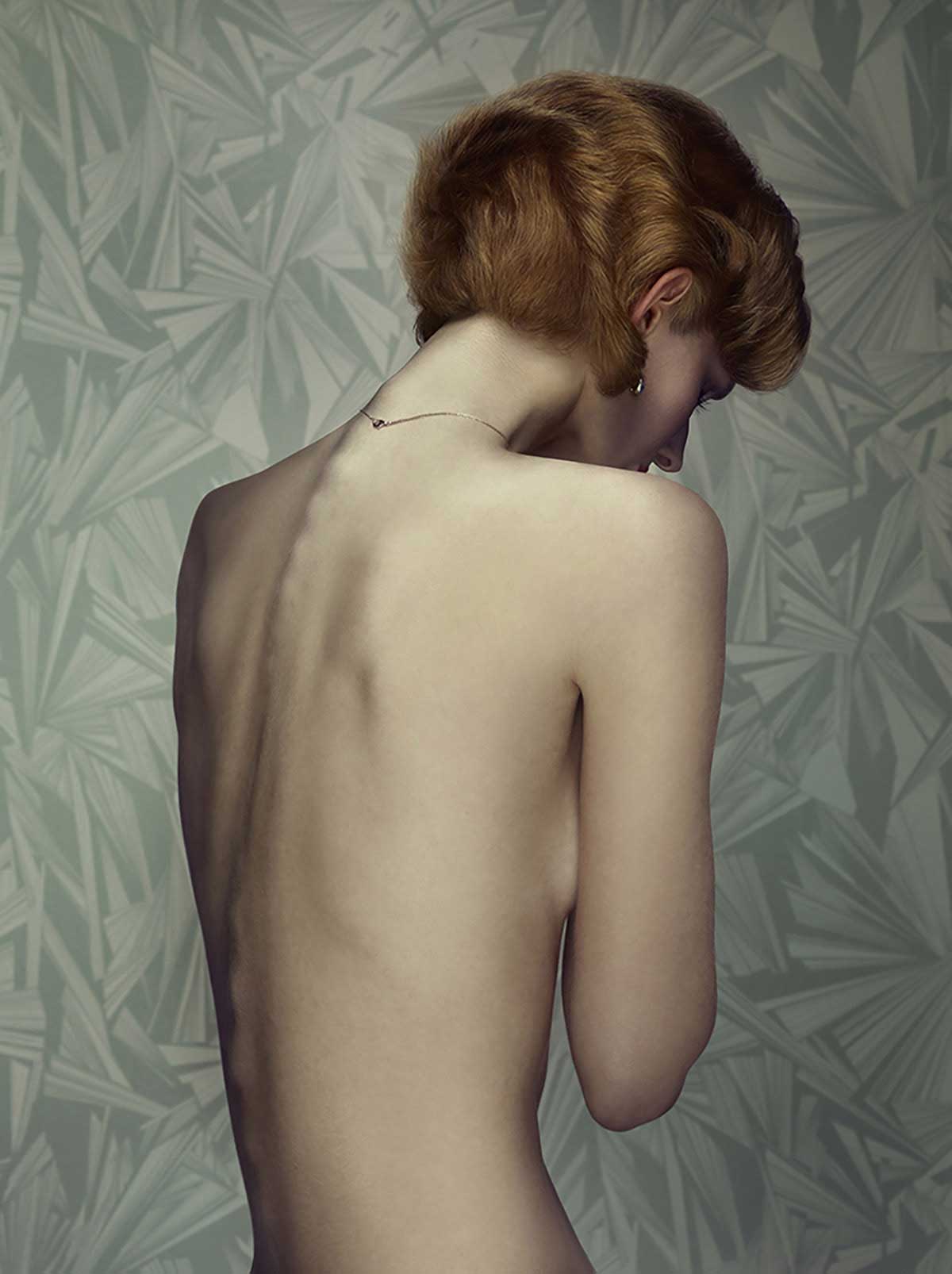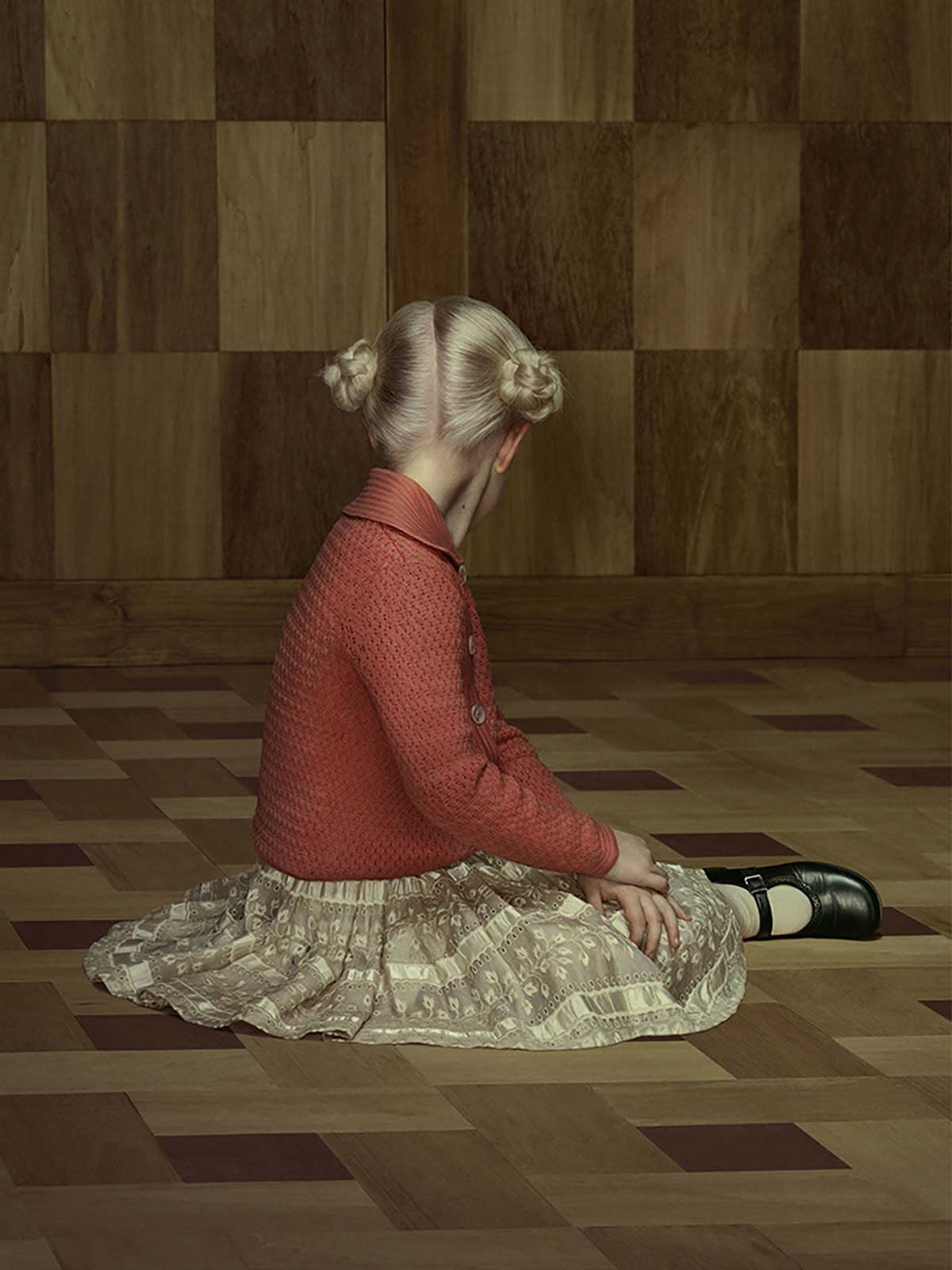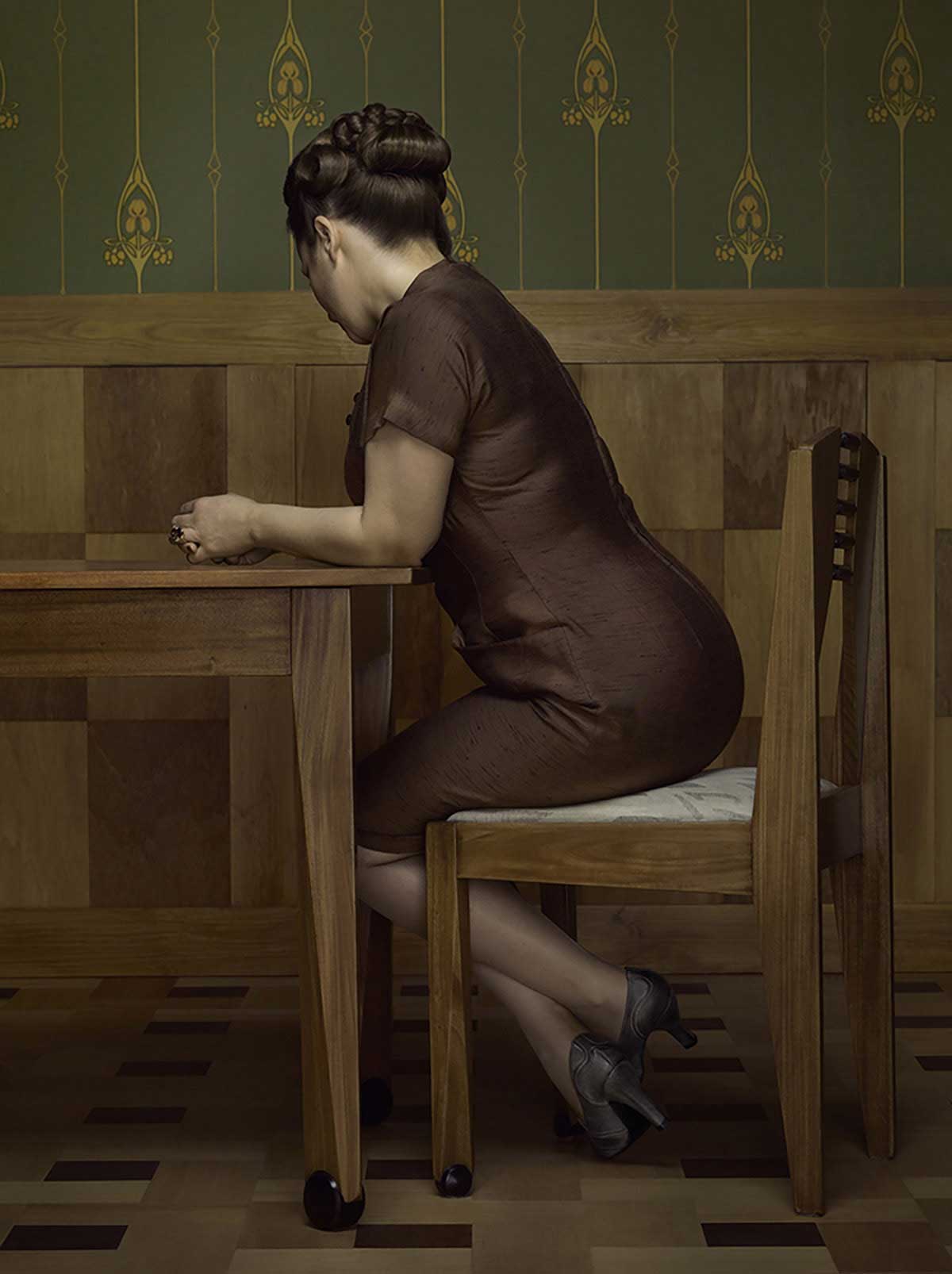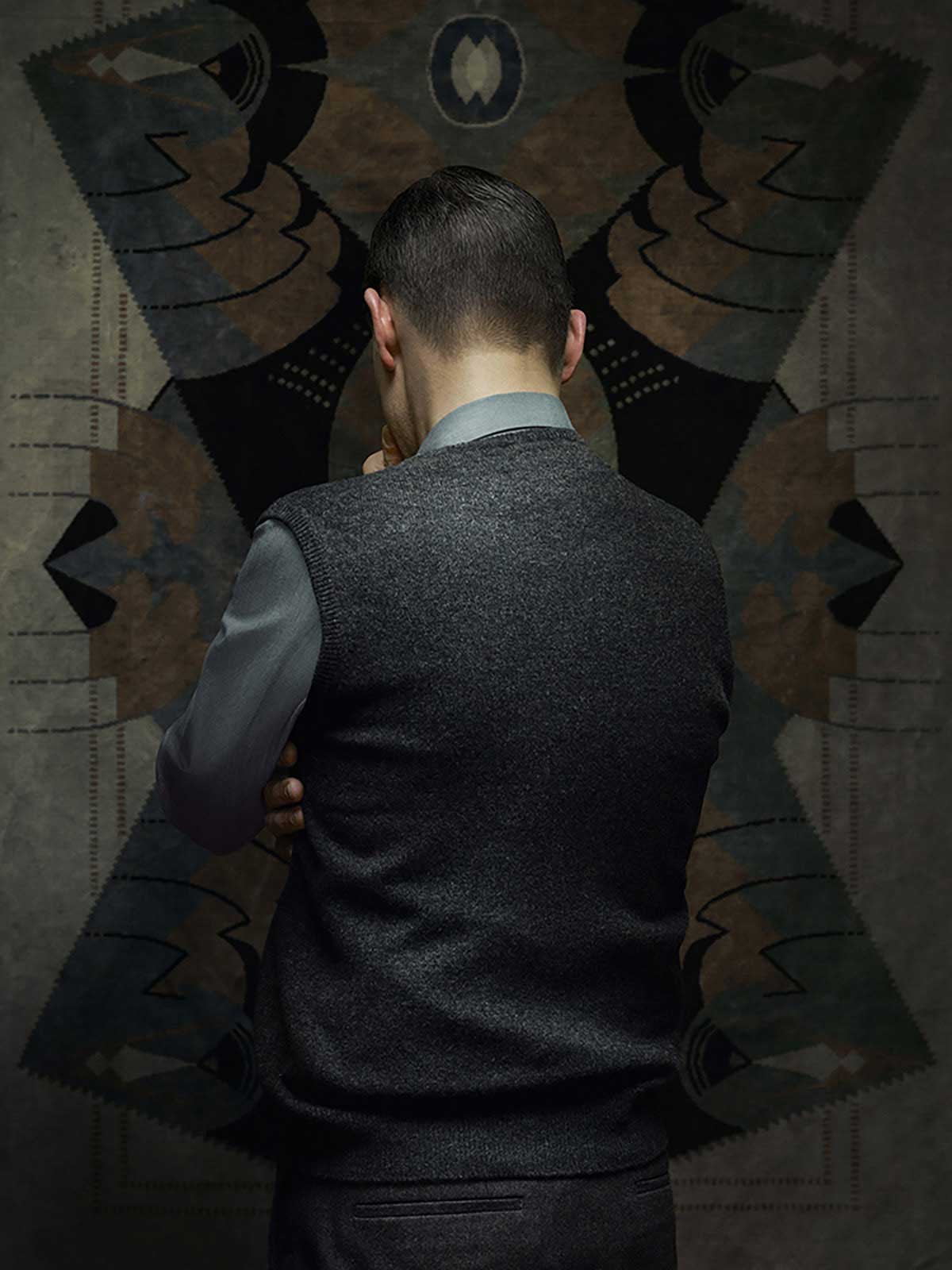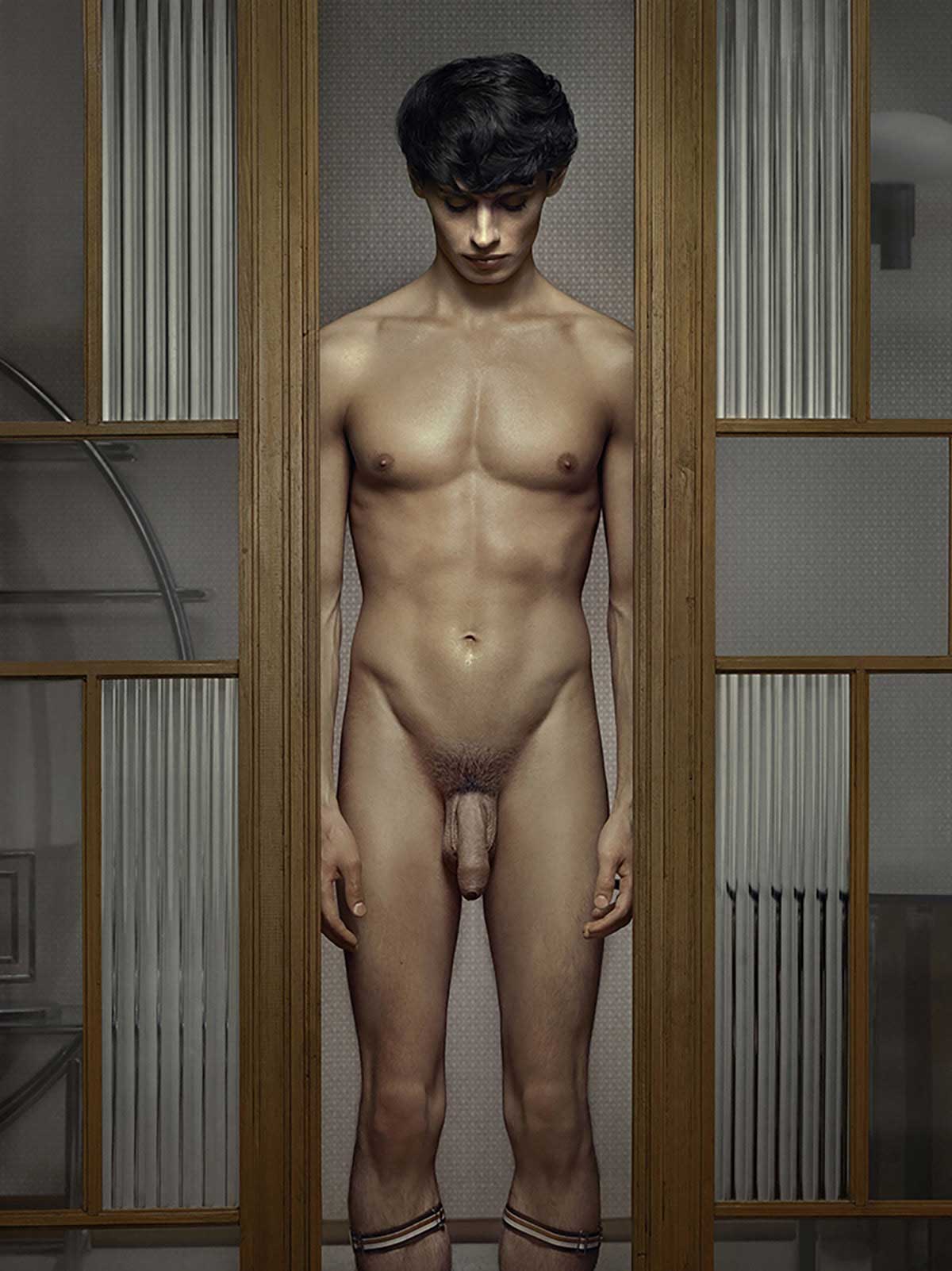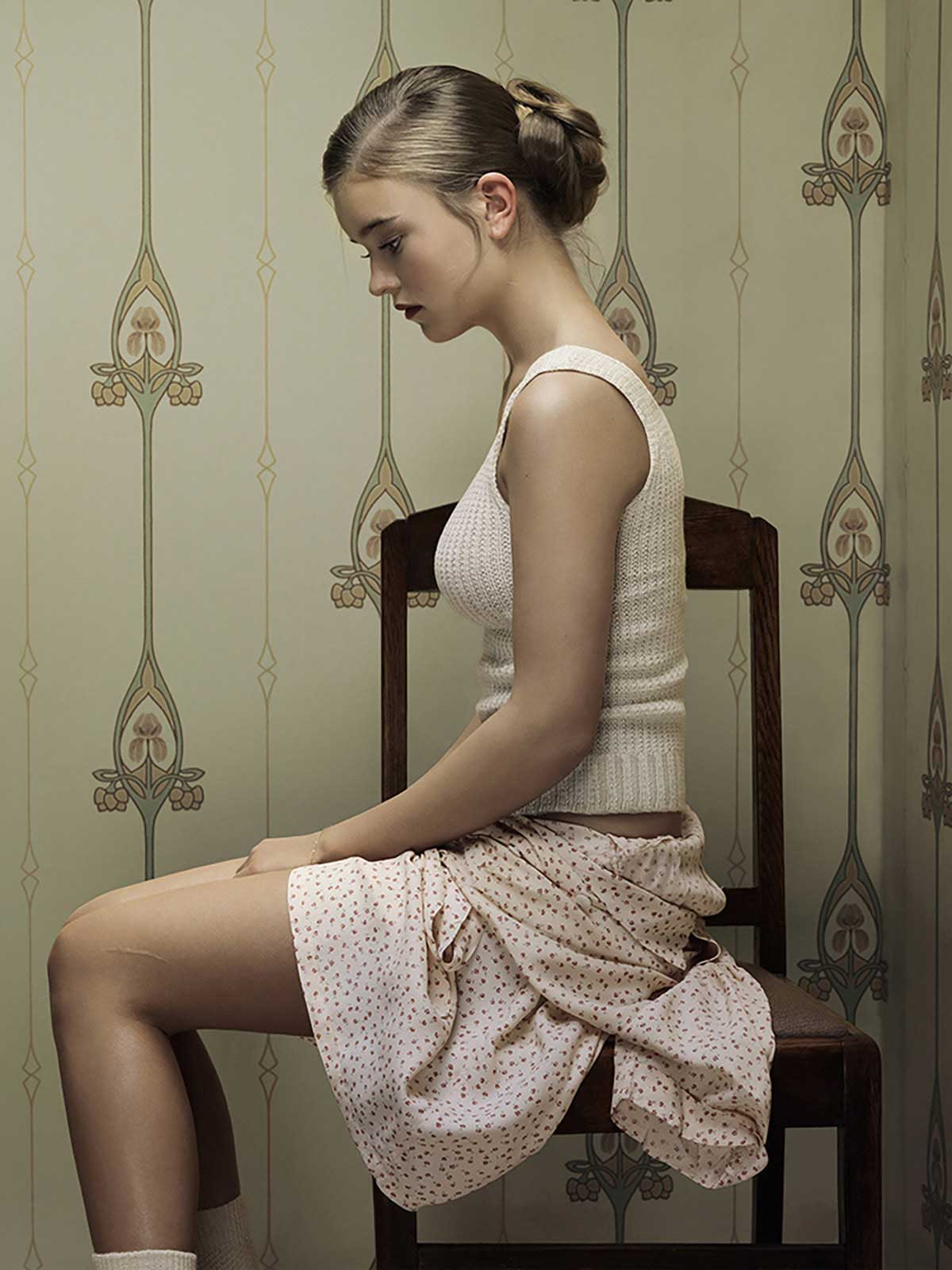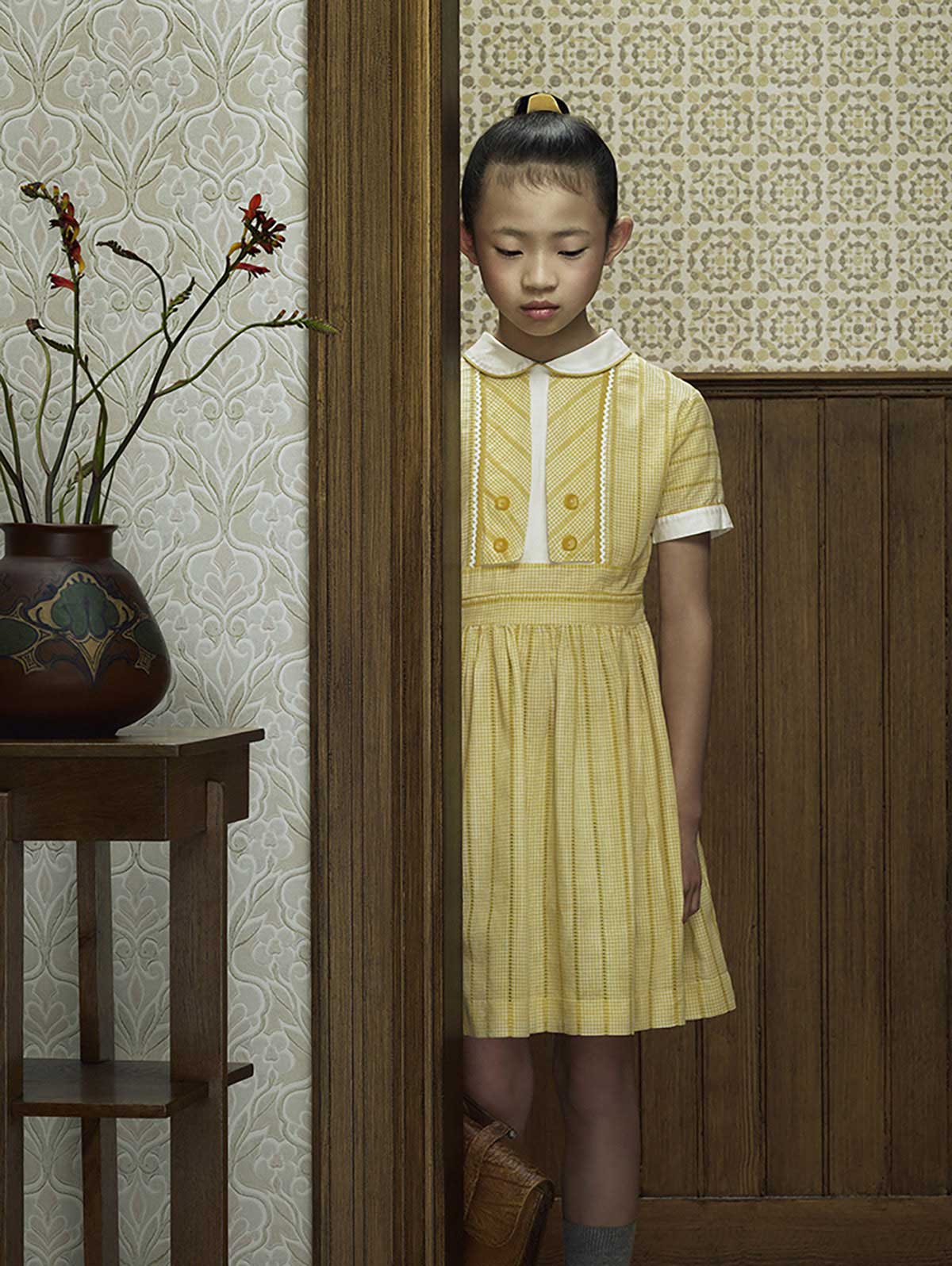This is what you see when peering through the keyhole of Erwin Olaf´s installation. A girl in a red coat sitting on the floor. A woman, with her back towards the camera.
A young woman, introvertedly staring at…. what exactly? None of the characters photographed in this series engage in eye contact with the viewer
They look the other way, there is no eye contact. Charming, intrigued even, yet also distant and as cold as ice. Still, this is presumably Erwin Olaf´s most emotional work. In this creation (2011-2013), Erwin Olaf once again demonstrates his particular skill in visualizing the unspoken, the overlooked, that which typically resists easy documentation. His trademark is address social issues, taboos and bourgeois conventions within the framework os a highly stylised and cunning mode of imagery. Yet in the end, his unconventional style never fails to deliver a dramatic visual and emotional impact. By providing scenic and striking designs, combined with the utmost perfection on the level of composition and passion for conceiving flawless scenarios, he vividly recreates the essence of contemporary life.
Consequently, it is hardly a coincidence that, today, Erwin Olaf should present a series such as Keyhole. At a time when our lives are openly dominated by norms and values. By the renewed human condition which is on everybody´s lips but whose image has rarely or never been rendered so strikingly. Especially when dealing with indignation and shame, feelings whose different variations we encounter every day – on the streets, in the news, in the mirror….. indignation and shame feelings that get under our skin and, in many cases, will confine and determine our lives for a long time. In the Keyhole series, both the confrontation with our indignation and shame and their autobiographical nature become reality. Erwin Olaf as an explorer in a new era, in search of recognizable signs of vulnerability, but with a keen eye for the general and mostly narrative narrow-mindedness of our society: the local gossip, who seduces whom, and the hypocrisy and rejection within our society included in all of this . Erwin Olaf does´t name any of his characters, but their body language is obvious to the viewer. And often recognizable. Perhaps this also tells a story of indignation over a certain action, a certain word or a certain type of education. Also the shame one feels over the particular act, word or education. Perhaps we enjoyed a fair amount of material wealth during our youth, but lacked the love and the soft touch to keep us from going wrong. Or maybe it all started with a smouldering glance from adolescent boy to an elderly gentleman, a glance that was denied, ignored and suppressed, as though a significant part of our body and our feelings could never be accepted. The Prevailing norms and values would not allow it. Not even today, as physical and sensual aspects are immediately remodeled as something sexual and therefore often perceived as negative. the pictures on «Keyhole» remind us of this mechanism. Erwin Olaf uses his razor-sharp aesthetic intuition, purposely concealing this theme, so that the viewer unconsciously and initially accepts the concealment presented behind this Keyhole. [Text: Christoph Ruys]
About Erwin Olaf
Dutch multidisciplinary artist Erwin Olaf works in the field of art photography, video installations and sculptures. In his art photography he often puts the conventions of fashion photography into the service of beautifully complex, often existentially terse portraiture. His emphasis is on precision in all of the visual elements — painterly lighting, flawless hair and make-up, settings that create an allure of serenity — but these highly stylised, polished depictions always have a subtext, addressing social issues, societal taboos and gender politics.
Olaf found inspiration for many series of art photographs in his own life, from the experience of growing older (Mature, 1998) his relationship with his mother (Separation, 2003) or traveling and staying in various hotel rooms (Hotel, 2010). In series Rain (2004), Hope (2005), Grief (2007) and Fall (2008) he explored, and challenged, the notion of domestic bliss. Dusk (2009) and Dawn (2010) indicated how culture can become repression, despite a beautiful appearance. Some of his more recent series, such as Berlin (2012), Waiting (2014), Tamed & Anger (2015) and Skin Deep (2015), push the boundaries of his earlier studio work and explore new physical and emotional territory.
Born in Hilversum, the Netherlands, Olaf was educated at the Utrecht School for Journalism and first emerged on the international art scene in 1988, when his series Chessmen won first price in the Young European Photographer competition. Since then, he has won numerous other international art and media prizes, such as Photographer of the Year in the International Colour Awards in 2006, Kunstbeeld magazine’s Artist of the Year of the Netherlands in 2007, a Dutch Johannes Vermeer Prize in 2011 and a Lucie Award from the United States for his entire oeuvre. Olaf has also earned several Silver Lions for his commercial photography.
Olaf has been involved in scores of group shows, and has had solo exhibitions at many major museums including the Bilbao Art Centre in Spain, the Modern Art Gallery of Bologna in Italy, the Museum of Modern Art in Moscow, The Hague Museum of Photography and the Rijksmuseum. He also designed the Dutch euro coins that have been in circulation since 2014, both featuring a portrait of King Willem-Alexander of the Netherlands. In 1987 Olaf began working with film, and in recent years his films have been screened at the Centre Pompidou in Paris and the Museum at FIT in New York.
Olaf’s work is represented in several major exhibitions in 2016. Until 1 May, Centro de Arte Contemporaneo Malaga in Spain will host a solo show featuring works from Olaf’s series Berlin, Keyhole, Grief and Hope. And until 20 April, the Pushkin State Museum of Fine Arts in Moscow exhibits a solo show of works from his series Les Derniers Hosneurs Rendus Aux Infortunes Illustrisismes Comtes D’Egmont Et De Horne, an homage to 19th century Belgian painter Louis Gallait, alongside the original paintings that inspired the photographs. Olaf has also designed the Rijksmuseum’s exhibition Catwalk, a large selection of the Amsterdam museum’s fashion collection, which was on show until 15 May.
Besides that Erwin worked on a 30 channeled video-installation named “L’Éveil”, curated by Jean de Loisy (director Palais de Tokyo) on Hotel de Ville for Nuit Blanche, Paris. Erwin Olaf also had a screening of his film Waiting for Nuit Blanche in Toronto. This viewing was an interdisciplinaire project, where several pianists played the music that was composed for this film. [Official Website]
